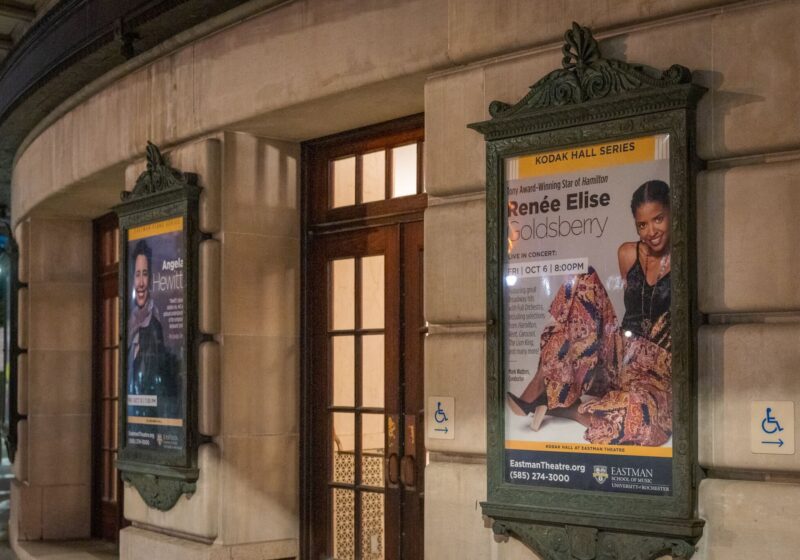I pass the Hartnett Gallery almost every day as I go to get food from Wilson Commons. However, I have never actually stepped inside. I’m also embarrassed to admit that my friend and I went up and down the stairs of the building several times before realizing that it was located on the main level.
Eventually, however, I arrived at the small yet spacious Hartnett Gallery to view the most recent art exhibit on display ? “Roger Mertin: Photography.”
This exhibit is in honor of a former professor of the Art and Art History Department, who passed away in May of 2001.
While all of the photographs put on display were taken by Mertin, the majority of them are not from his personal collection. The images on display at the Hartnett Gallery are all owned by members of the Department of Art and Art History, the Visual Studies Workshop or by Mertin’s friends and colleagues in the Rochester area.
Almost every photograph is accompanied by a brief description provided by the owner of the particular piece. Such vignettes allow an outsider, such as myself, to attempt to understand Mertin’s artistic intentions.
Mertin’s friend, Arch Miller, said of Mertin, “He always worked with such affection for his friends.” This assessment is quite apparent when one views Mertin’s work. The majority of the photographs in the exhibit are of simple pleasures shared by the ones he loved.
My first reaction was that I would love to hang one of the photographs in my room. The first photograph in the exhibit is of two of his friends sitting in a diner. The exhibit also showcases a few photographs of Christmas trees.
Apparently, Mertin photographed his friends’ Christmas trees annually. The Christmas-themed series is quite amusing as well, in that one of the pieces is a photograph of a decorated mantle. Rather than have traditional Christmas stockings, the homeowners chose to hang hosiery instead.
Also, one of the vignettes offers a comical anecdote about one such Christmas tree catching on fire.
Other photographs included of a tiny library. According to the vignette, Mertin possessed a strong interest in small-town libraries and how their respective communities utilized them.
Another photograph is taken from inside the window of an establishment. Although it is written backwards, one can read the writing on the window, which says, “Love Carefully.” This colorful picture demonstrates Mertin’s warmth and the importance of close relationships in his life.
Only two of the pieces in the exhibit were taken from Mertin’s personal collection. They are two of the most complex images, and are both in color. One of the two is a photograph of one ship approaching another. However, one of the ships is at a distance and hidden in the fog. This technique makes the photograph look as though half of it was developed in color and half in black and white.
The final four pieces are of his female friends and their babies. Mertin not only captures the beauty of the children, but also their happiness, and the mother’s love for her children.
Sheida Jafari, a junior who works at the Gallery, said that the exhibit had an excellent opening day, and that on average, the exhibit is quite popular. However, if you wish to view dark and abstract photographs, then perhaps the Mertin exhibit is not for you.
On the other hand, if you appreciate simplicity, then you should certainly stop by the Hartnett Gallery between now and Jan. 31 and enjoy the photography of one of our own.
Reyhani can be reached at mreyhani@campustimes.org.


